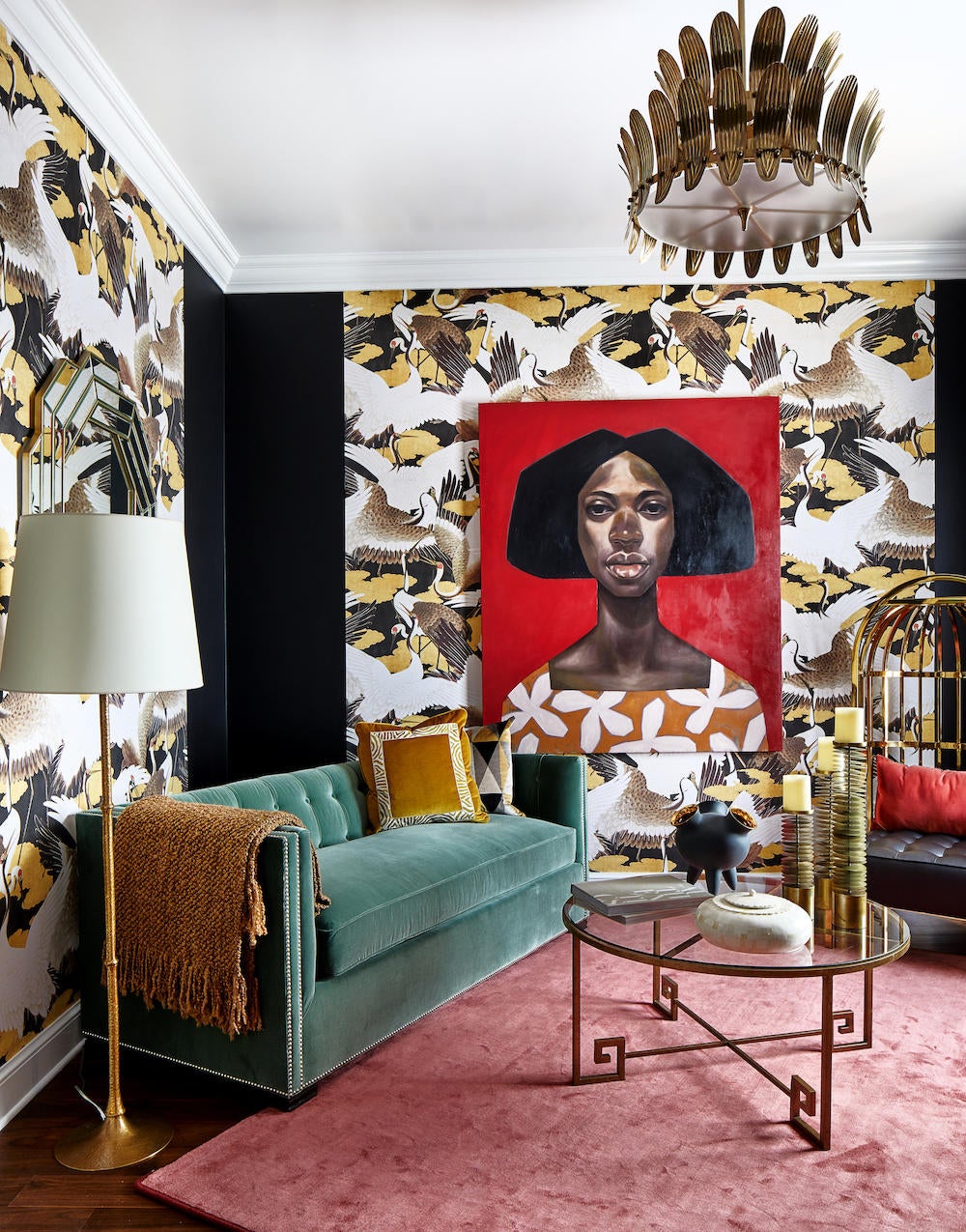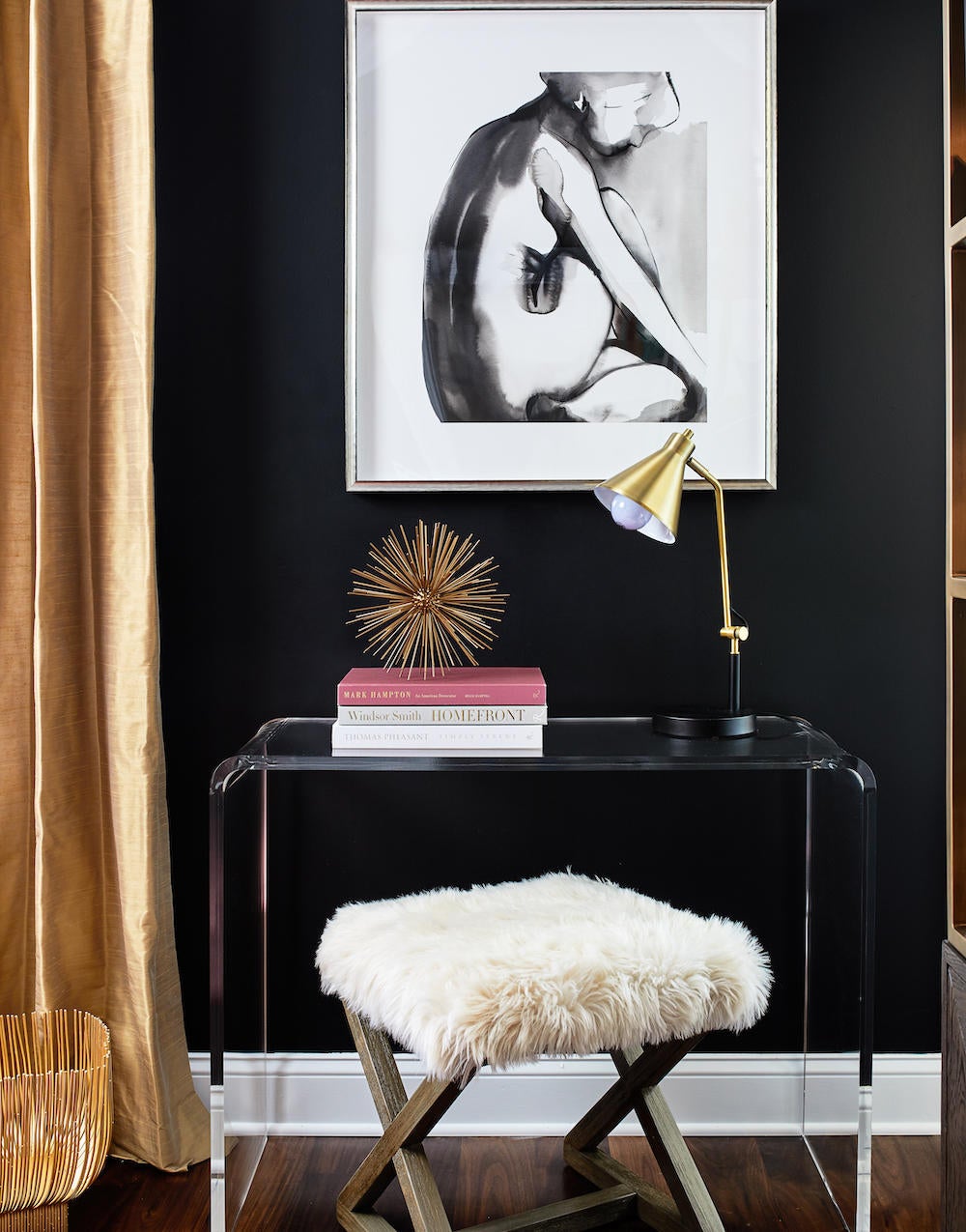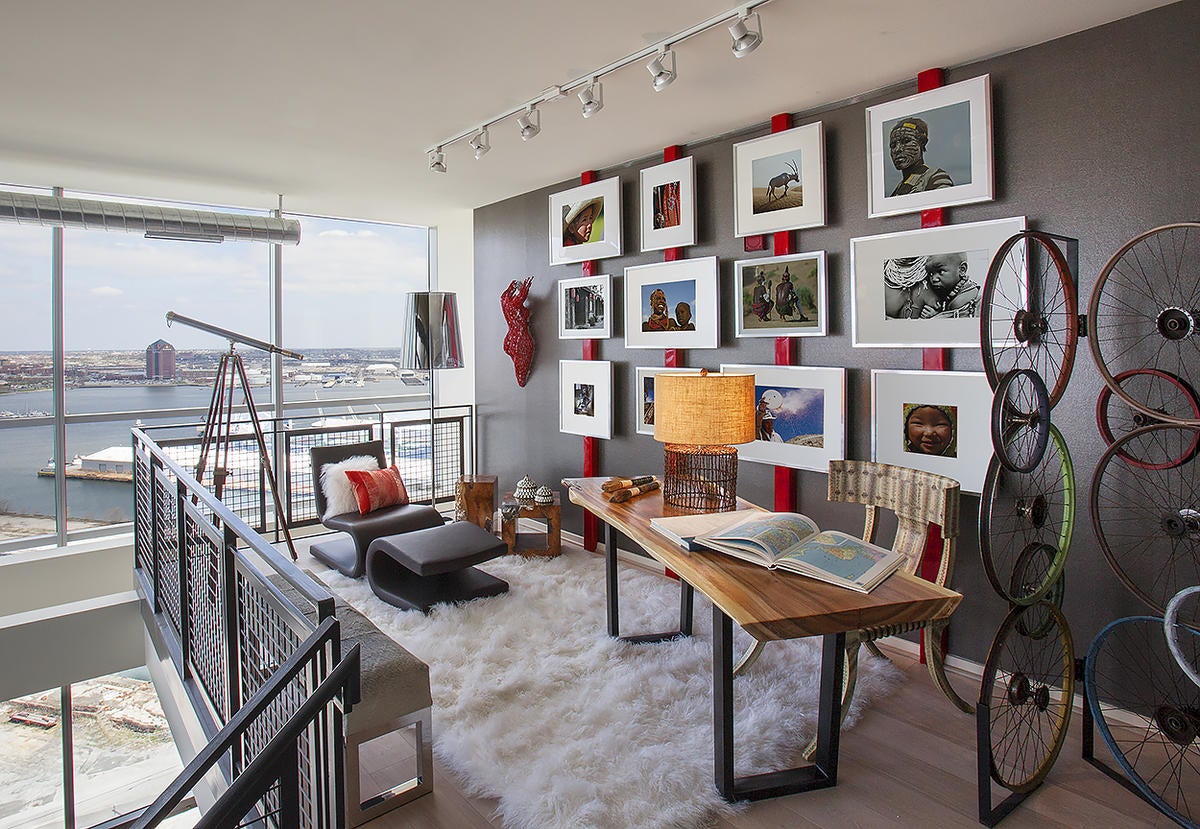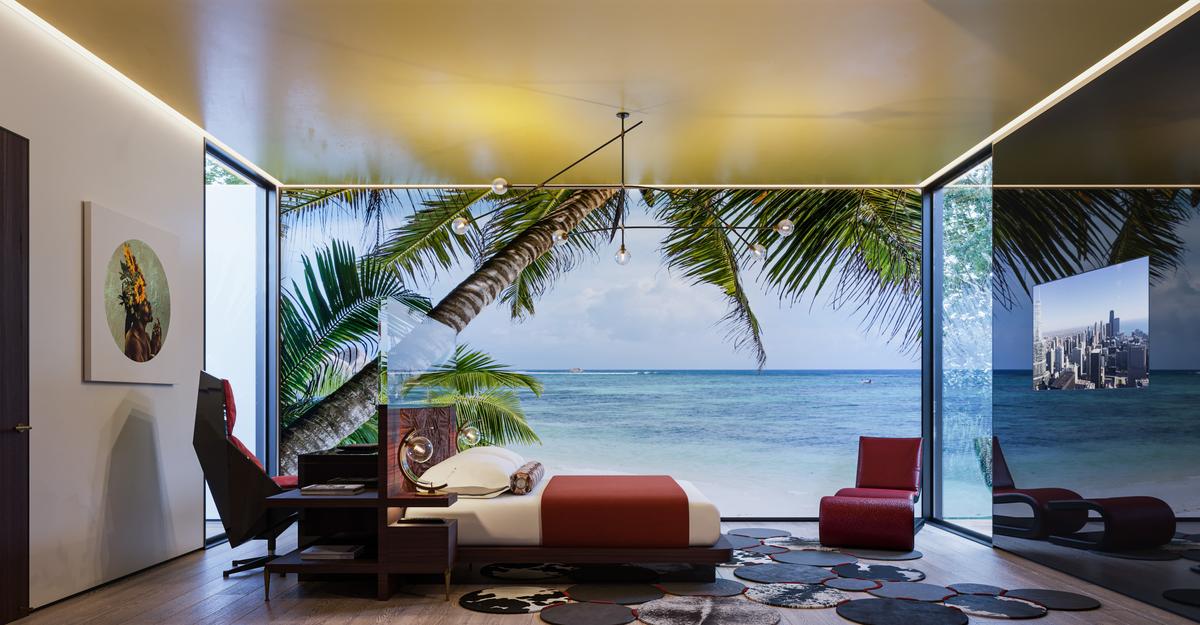The 50 States Project is a series of candid conversations with interior designers across the country about how they’ve built their businesses. This week, Laurel, Maryland–based designer Sheryl McLean of McLean & Tircuit tells us how networking groups have helped her business grow, why she doesn’t mind partnering with other designers, and how she opened a retail store this month to service clients with smaller budgets.
Were you always drawn to design?
My father used to build—houses, furniture, anything—and my mother was creative with color and paint. We were always changing something. You could come to our house on Monday, then come again on Friday and you’d say, “Who lives here? What happened?” But although that was always part of me, I ignored it—I’m a Black woman, and in my day, you really didn’t define success by being an artist. You had to be a doctor, a lawyer or—well, just a doctor or a lawyer. The other stuff was just fluff, you know? I did not see design as an occupation, so I went to college as a psychology and biology major.
When did you first realize design could be a viable career?
While I was in college, I had a summer job in the teletype office at MGM Studios, delivering mail. I had the administration building on my route, so I got to meet the man who owned most of the studios at the time. One time I went into his office to pick up a package, and it was the first time I had ever seen suede walls. They were chocolate suede, and he had these brilliant white shutters. I mean, it was a kind of environment that I had never been in before, and I just knew: I want to do this. I could do this. This is fabulous. That was actually probably the first time that I gave it a second thought. I didn’t act on it for years, but that’s when I decided that this was something I was going to do.
You did eventually go back to school for design.
I was an international flight attendant when I started interior design school at UCLA part-time. I liked the program—and while I was there, the school encouraged me to pursue architecture because my thinking was so three-dimensional. They were like, “It would be great,” but I’m like, “What? I don’t know anything about that.” They encouraged me to apply, I did, and I got in based on my portfolio—with a full scholarship. I remember thinking, “Are you kidding me?”
I took a leave of absence from the airline, so I was able to go to school full-time nine months of the year, and then I flew in the summers. I did that for the entire three-year master’s program. After I graduated, I did some internships in L.A., then moved to the East Coast and worked for a firm in D.C. for about a year and a half. I would work during the week and fly on the weekends. I was killing myself doing it, but luckily I never let it go, because the firm’s work had slowed down and I got laid off. So I flew a little bit more.
In the meantime, I built a reputation for being able to do small architectural projects. While I was laid off, I picked up little commercial jobs. Somewhere along the line, I realized that I was good at what I did, but the passion wasn’t there. For me, that had always come from dealing with colors and textures, so I decided I would go back into interiors. Then 9/11 happened. I was a New York–based flight attendant at that time, and it just woke everybody up. For me, it woke me up to say, “You’ve got to get serious. You’ve got to make up your mind.” I decided that I wanted to financially situate myself—if I flew for two more years, I could retire from flying with all my benefits and pursue interior design, because I knew that’s really where I was meant to be. And that’s what I did. I founded my own firm two years later, in 2003.


Your portfolio is a mix of design and interior architecture, and residential and commercial work. Does that change the way your pipeline for future jobs work?
Yes—but remember, I always have two pipelines. There have been maybe two projects that started out as residential jobs, and they brought me into their businesses after I designed their home. But generally, they are very separate. It’s been good because when the economy is tight and everybody’s holding back, commercial work is really booming. It keeps me pretty level.
Has that mix always helped you ride out boom and bust cycles, or were there moments where both sides crashed?
There have been moments where it’s like, “What the heck? Maybe I should go to medical school next time.” I’ve had to work hard to keep it balanced, but one of the advantages of stepping into a career later in life is managing money was never a problem for me. I had already learned those lessons, and being not so attached to what I do—or at least less defined by it—was a big help. When things weren’t working in my favor, it wasn’t like, “Oh, my God, I just need to go home, turn the TV on and crawl under the covers.” No, life goes on. You do other things. Those kinds of things—life lessons—kept me always afloat.
What does your business look like today?
Right now, I have two fairly large commercial projects, as well as a smaller commercial project—a corporate office that’s about 3,000 square feet with seven or eight individual offices in it. And then I’m working on four residential projects. One is a whole house, one is just the kitchen and bath, and the others are a few rooms in the house. And then because I couldn’t find enough work for myself—I’m just kidding about that—I just added a retail boutique to my studio.
Congratulations! It just opened, right?
I had my opening last week, and it was fantastic. I expected 20 people, but 60 or 65 people came. I was shocked.
What made you want to open a retail location?
I have this philosophy that I shouldn’t have to drive so far to find nice stuff. I’m not interested in going to HomeGoods all the time—I mean, everybody goes from time to time, but not for everything. When I wanted something really special, I couldn’t find it. So everything in my studio is hand-picked and curated by me. There might be one or two pieces of furniture, but it’s mostly accessories. They’re all my favorites. And I’m not trying to order anything—you come, you buy.
When I started working on those two large commercial projects, I realized that I really can’t take on the small residential jobs—it’s got to be really worth my time to pull away from that work. Eventually I hope to be able to service design clients with a lower budget—maybe down to slightly under $100,000—but I’m not staffed for it right now. I need my team to be working on these other projects. So when people come to me with a $50,000 budget, I can tell them, “I can’t help you there, but you can come to the boutique and I bet you’ll be inspired to buy some really unique things if, in fact, you want to just do a few things yourself and freshen it up.”
How are you shopping for it?
High Point Market is the main market that I attend, but I also go to New York a lot. I just came back from ICFF, and I purchased some things there. I go up there for BDNY because of my commercial work, so I buy there, but I also go to 200 Lex. There are a couple of places that I go to for vintage pieces, or I’ll shop when I’m traveling if I get a price that will allow me to resell it. It’s all of that.
Are you stocking large quantities of some items?
Not really. When people buy it, it’s gone. I mean, for some of it, I could—but if someone came in and said, “I want a whole bedroom set, and I want this and I want that,” then you need an interior design service. You’re not going to find that in here.

What kind of team do you have to help you with all of this?
So I’ve got my main assistant, who is also a designer, and then two team members to help me with the paperwork in what I do, especially because of the commercial work. And then I always have interns, and I make sure that they get real-life experience. I don’t just stick them in the library. I mean, everybody’s got to pay their dues, but I want them to learn something. And I’m in the process of hiring another designer because I’m going to be in these jobs for at least a few years.
In the past, if I’ve had a project where I know that I’m only going to need the help for six or seven months—basically, less than a year—then I’ll either outsource or ask designer friends if they want to partner with me.
What does that partnership look like? That sounds like it could get complicated!
It always works because I’m very specific about what I need help with. I am the principal designer, but I’m very open to collaborating on a design, and because I’m choosing what designer I’m bringing in, I know their direction anyway—it’s going to be somebody who will add to what I’m working on. Like on a commercial project, I might say, “I’ll do the floor plans, but I need you to do a few of these units for me. Here are the guidelines, and this is what my vision is. What do you think?” I’ll just turn that whole part over, because I might be busy working on the lobby. If they’re local, we usually meet a couple times a week to go over everything. You have to pick your partner carefully, and it’s really important that your minds are blended before the project even starts. Otherwise, I’ll just outsource it. That way, I can control the whole narrative.
How do clients find you these days?
Most of my commercial business is referral, and I do a lot of networking with architects and developers. I also belong to a few big women’s entrepreneur organizations right now. One is BOW—it’s a new organization for Black women who own businesses, and all of us are either the president or the CEO. It’s big, dynamic and powerful. We all have businesses with different levels of revenue—some up in high millions—and we’re supporting each other. It helps to be friends with people like that. I’m also in the Women Presidents Organization, which is a similar thing. It’s a worldwide organization, and your business has to have revenue of at least $1 million, but there are members who are bringing in billions. To be able to meet women who can do that—I only see them at conventions, but it’s pretty impressive.


Can you tell me about the design scene in Maryland?
I love our design community here, but it’s a little more competitive than it is collaborative. There are a lot of interior designers in this area—I mean, a lot. But that applies to residential more than commercial. When I’m in California, I’ve found it’s the opposite—it’s more collaborative and less competitive because everybody’s doing their own thing.
Aesthetically, you mean? Do you find that there is less room to do your own thing where you are now?
I think there is. This is a very conservative area. It’s like, how many times can we design this to be like the Kennedy Center? Or, how many colonials do you have in this area? Does it have to look like a colonial? I am a daring designer, and I like to push the limits, but I’ve noticed that working here has made me more conservative. I have one job in Sacramento right now, and I have to shake my head when I work on it and say, “OK, you’re not in Maryland,” because I found myself being more conservative than I wanted to be.
Are your Maryland clients coming to you because they know that you’ll take them out of that conservative comfort zone?
They do. I’m not afraid of color—but in this area, they like blue. Blue and blue and blue. They’re afraid of crazy color. So I introduce all of that.

How have you approached billing for all of these different pieces of your business?
For residential jobs, I charge a flat fee at the beginning and then I bill hourly for project management after the design is done and we’ve ordered everything because a lot of my work involves some kind of renovation. Then there’s a procurement fee that I attach to the products we’ve ordered. I don’t like to say that I add a percentage, because it’s not like I arbitrarily put a percentage on it. It’s like, “That takes a person to sit here and do this, so I am going to charge a procurement fee.” Those three fees are what I charge for residential work. I take a healthy retainer at the beginning and I bill against it, and I don’t order anything until it’s fully paid for, so I’m always covered.
Now, commercial is a little different—it depends on the client. I may only be doing the design, and they bring somebody else in to do all the procurement so I’m just selecting and speccing it. But also, when you’re on these large commercial projects, they may not pay you for three or four months, and then they pay you based on what has been completed. But you’re still paying your people those three or four months, which can be a challenge. There are different ways to do it, because you don’t want to use your own money. One solution is to go to the bank, show them the contract, and basically you’re giving up a small percentage—usually it’s 1 to 1.5 percent—so that the bank will finance everything, and you’re paying the bank back as you get paid. But that is very difficult for a woman, by the way—banks are very biased about women and lines of credit. Unbelievably so. And I’m not just saying that for me, I’m saying that after working with powerful women for whom I just wouldn’t expect that to be the case. You have to fight for it sometimes, and if you don’t get it, you’ve got to figure out a way to work around it.
What sized job are we talking about here?
If it’s a small enough commercial job—that means it’s probably under $5 million—you can run it like you do a regular job where you price it out and they pay. But when you are in one of these really large projects where they have a prime contractor and then 200 or 300 subs—when you’re on those kinds of projects, that’s when it’s a problem. And it’s a fight! I’ve never heard a man say he had to put his house up, but I can’t tell you how many bankers have said that to me. You could have almost all the money in the bank and they’ll say, “Well, we’re going to need collateral. Can you put your house up?” And I refuse to do that.
That’s so frustrating. What do you do when the bank tells you no?
Well, that’s just one bank, first of all. The worst thing you can do—which I have done—is I keep my credit cards down to nothing so that if I have to pull money, I can. You’ve got to make sure that you have a very high credit rating. You want to be an “excellent” all the time, because they’re going to be harder on you. And you’ve got to make sure you’re bondable, basically, because if you’re bondable, then you have a shot.
Is the alternative getting the money at an unfavorable rate?
No, they just won’t give you enough. Let’s say you need $200,000 or $300,000 at a minimum—maybe they say, “Well, we can give you $25,000.” If I need $250,000, what am I supposed to do with $25,000?
When you look ahead, where do you see opportunity to grow or what do you want your firm to look like as time goes on?
I think I want a team of five full-timers. I don’t have that now. I have three full-timers. I want five full-timers. I want somebody else to be able to run the retail store for me. I want to be in the position where I am really more oversight than anything. If I’m really, really lucky, I want to bring in somebody that wants to buy this from me at some point. I’ve always said I would never retire, and I probably won’t, but that doesn’t mean that I’m always going to have the business at this level. I want somebody else to have it. It’s pretty well-developed, but it’ll be really developed then. I listen when I’m hiring when people say, “Someday I want my own business.” Then I’m like, “Oh, really. What kind of business do you want?”
Do you want this business?
Well, I don’t want to give it to them yet, but I want to know how they think about it. A lot of younger designers, they all come out of school and think, “I’m going to hang my name out there and it’s all going to come.” No, no, no. You’re going to go through some serious hardships. You may not tell anybody, but you will. So, having a business already established is a blessing.
What is the biggest thing you know now that you wish you had known when you started your business?
I can’t tell you how many people design to photograph, to be put in a magazine. It’s wonderful, but it’s very short-lived and it doesn’t make a career. If people appreciate my work, it’s very flattering. But do I need it? No, I don’t. Staying curious is also important. I do all the CEUs. I go to all the shows. I go to market, whether I have a project I’m shopping for or not. I go because it’s going to introduce me to something that I may need to know.
To learn more about Sheryl McLean, visit her website or find her on Instagram.




























